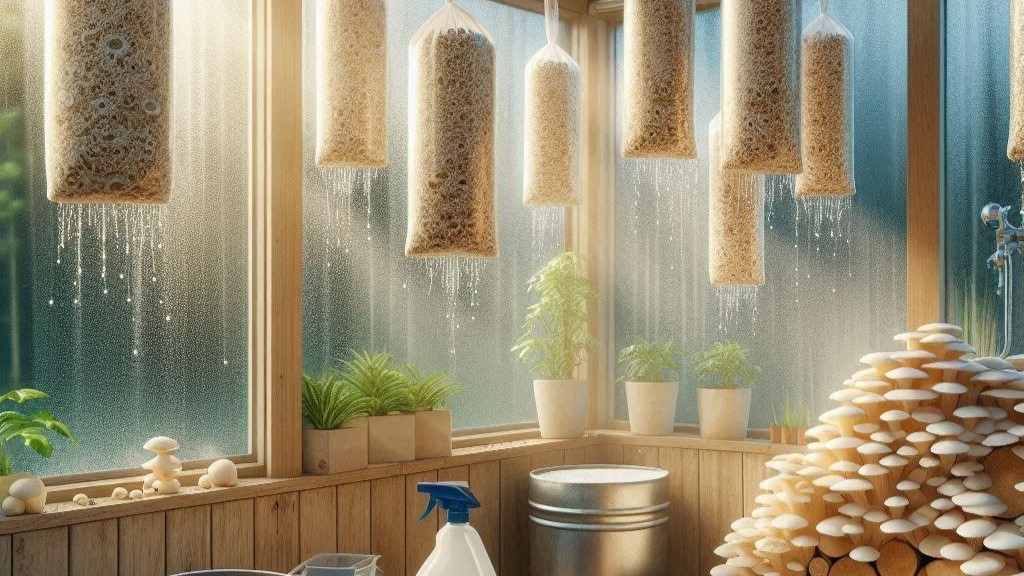Mushrooms are the only ‘farmers’ working underground: while we cultivate them, they cultivate symbioses with the roots of plants!
- Edible mushrooms: from harvesting to cultivation
- Cultivation methods and substrates
- Environmental management and growth phases
Edible mushrooms: from harvesting to cultivation
Mushroom picking is a very old tradition, dating back even to prehistoric times! Back then, they were only found in nature, no cultivation.
Genuine cultivation did not start in the West until the 17th century, thanks to the discovery ofAgaricus bisporus, the classic button mushroom. From there, it also reached the United States in the 19th century.
Today, mushroom cultivation is super advanced. Truffles, for example, have been cultivated since 1972, but it takes infinite patience: up to 10 years to harvest them!
But mushrooms don’t just taste good, they are also good for you: they are full of proteins, vitamins and minerals, but have very few calories and zero cholesterol. Some even have medicinal properties, with potential anti-cancer and neuroprotective effects, and help the immune system.
From an economic point of view, then, they are a gold mine: creating a mushroom business can be super profitable, and sustainable too! They can be grown using agricultural waste and in small spaces. Moreover, with all the available species and increasingly innovative cultivation techniques, the sector continues to evolve and offer new opportunities.
Cultivation methods and substrates
Growing mushrooms is easier than you think, you just have to choose the right method according to the species and environmental conditions!
On logs: perfect for mushrooms such as shiitake and reishi! You take hardwood logs, inoculate them with mycelium and leave them in a moist, shady environment. The mycelium colonises the wood slowly, and after a little patience (12-24 months), the mushrooms appear! It is an ancient and super-sustainable method, because it uses the natural decomposition of wood to create a new food source.
In bags or pasteurised substrates: if you want faster results, this technique is for you! Perfect for oyster mushrooms and lion’s mane, it involves the use of straw, sawdust or coffee grounds, which are sterilised to eliminate unwanted micro-organisms.
After adding the mycelium, the bags must be placed in a controlled environment with ideal temperature and humidity. In just a few weeks, abundant harvests are obtained! An excellent solution for those with limited space, even in the city.
On litter: The classic method for mushrooms! A mix of compost, manure and straw is used, prepared by fermentation and pasteurisation. After inoculating the mycelium, humidity and temperature must be controlled to achieve good growth. The great thing is that the spent substrate can be reused as fertiliser, making it all super eco-friendly! It takes a little care in handling, but the result is a very high quality harvest.
Environmental management and growth phases
Mushroom cultivation has a precise process to follow, starting with the inoculation and incubation of mycelium in sterilised substrates. Basically, the mycelium is ‘sown’ in clean materials and allowed to grow in high humidity and temperature-controlled environments.
The ideal is to keep the humidity above 80% and the temperature between 18 and 24°C, with good ventilation to avoid unwanted mould. Constant monitoring is also needed to immediately detect any contamination, such as rival bacteria or fungi, and remove them before they compromise everything.
The choice of mushroom type depends on the experience and goals of the grower.
Oyster and champignon mushrooms are perfect for beginners because they resist well and grow on simple substrates, such as straw or coffee grounds. There is also the possibility of adopting circular mushroom cultivation, which recycles agricultural and domestic waste materials, reducing environmental impact.
Another big advantage isspace optimisation, because mushrooms can be grown even in small rooms such as cellars and balconies, using stackable bags or containers. A perfect solution for those who live in the city but still want to try their hand at cultivation!
Play for the planet!
